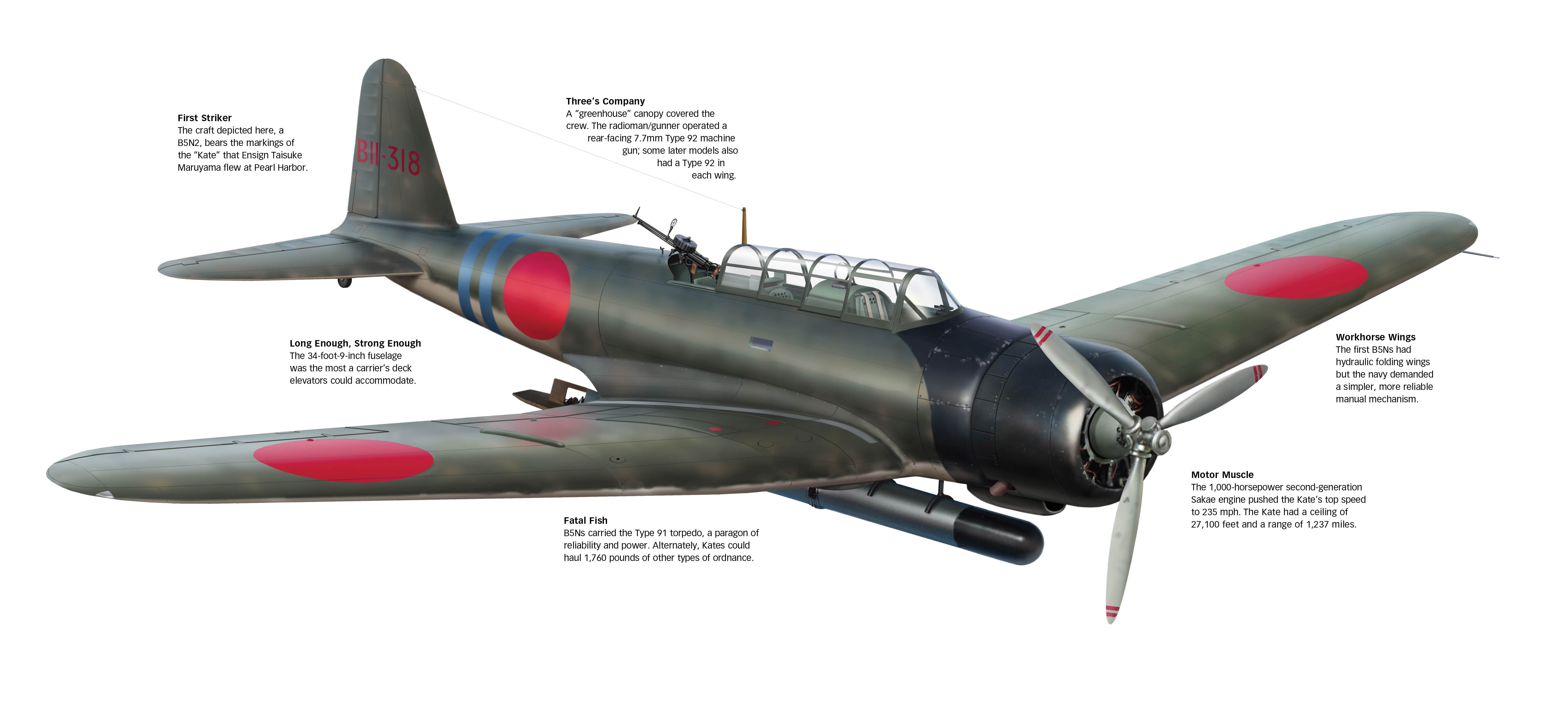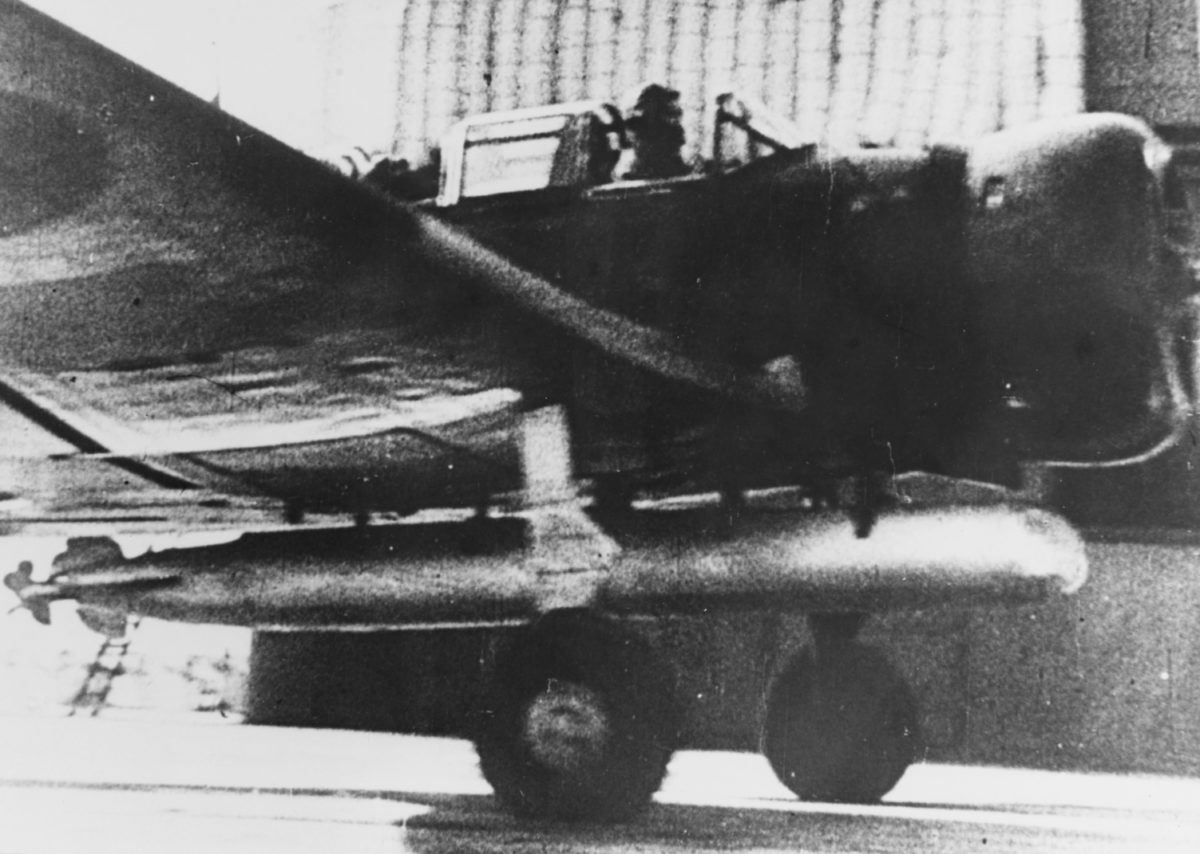Outclassed but Still Punching

THE CARRIER-BASED B5N, which the Allies nicknamed “Kate,” peaked early. Even its 1938 combat debut against the Chinese showed that the aircraft needed armor to protect its fuel tanks and three-man crew. Too heavy, said the Imperial Navy, which instead had Nakajima install a bigger engine, hoping pilots could outrun pursuers. Delays in an update made the B5N Japan’s main torpedo bomber through the war. On December 7, 1941, a force that included 143 Kates left carriers off Hawaii to attack Pearl Harbor; a Kate from Hiryu sank the battleship USS Arizona. In May 1942, at the Battle of the Coral Sea, Kate crews damaged carrier USS Yorktown and so disabled carrier USS Lexington it had to be scuttled. A month later at Midway, 81 of 93 Kates went down, but heavily damaged enemy warships; in October at the Battle of Santa Cruz Islands, Kates helped sink the carrier USS Hornet. Late in the war, superior Allied design and aircraft production, plus harsh attrition among Japan’s carriers and carrier aviators, relegated the B5N to a primary role of trainer and target tug. Kates also made antisubmarine sorties and kamikaze runs. No intact specimens survive.
Originally published in the November/December 2015 issue of World War II magazine.





